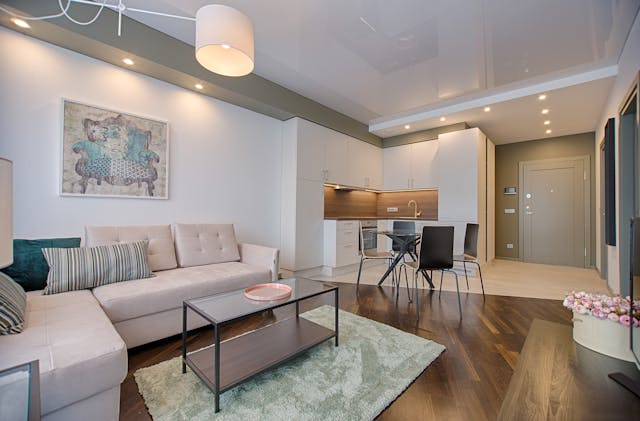Interior design, like other creative forms, is a dynamic representation of culture, personal taste, and changing trends. The realm of interior design is a fascinating terrain in which traditional aesthetics coexist with modern advancements. In this trend analysis, we will uncover the connections that connect classic elegance to the cutting edge of modern design.
Classic Elegance: Timeless Appeal
Classic interior design is associated with symmetry and balance. Inspired by historical periods such as the Baroque and Renaissance, this design emphasises harmonious furniture groupings, delicate decoration, and a feeling of order. Balanced space layouts and reflected accents provide a timeless, refined atmosphere.
Classic interiors use luxurious materials such as marble, mahogany, and brass. Intricate details in furniture, mouldings, and decorations demonstrate exceptional craftsmanship. The classic design honours the past while conveying luxury and majesty.
Classic colour palettes feature soft neutrals, warm creams, and understated hues. These colours provide a sense of subtle elegance, enabling architectural features and furniture to flourish. Classic interiors frequently use rich, deep tones like burgundy or blue to add a sense of regality.
Transitional Fusion: Bridging the Gap
The transitional style serves as a link between classical and contemporary design. It combines the timeless beauty of traditional rooms with the clean lines and simplicity of modern design. Consider historic furniture in modern textiles or classic architectural components in a clean, contemporary environment.
Transitional areas frequently use neutral colour palettes to create a peaceful and friendly feel. However, splashes of colour, whether in furniture or artwork, provide a contemporary liveliness to the design. This balance guarantees that a place does not feel excessively traditional or futuristic.
Furniture in a transitional style is warm and inviting, with luxurious upholstery and smooth lines. The pieces are adaptable, fitting into both traditional and contemporary contexts. The goal is to make a pleasant environment that caters to a variety of tastes.
Contemporary Chic: Embracing the Future
The contemporary design emphasises clean lines and minimalism, resulting in rooms that express openness and simplicity. The modern aesthetic is defined by furniture with clean lines, clear spaces, and little decoration.
Contemporary interiors also feature a preference for creative materials such as concrete, glass, and metal. Smart home technologies, automatic lighting, and cutting-edge appliances effortlessly integrate into the overall design.
Bold colour schemes are common in contemporary environments, ranging from vivid accent walls to eye-catching furnishings. The goal is to create visual appeal through contrast. Statement objects, whether in the form of art, furniture, or lighting, act as focal points to draw attention.
Blurring Boundaries: Eclectic Inspirations
The eclectic approach to home design entails comfortably combining pieces from numerous styles and eras. This design promotes personal expression, allowing homeowners to highlight their distinctive likes and interests—a blend of classic, transitional, and modern components results in a distinctively unique room.
Eclectic rooms frequently incorporate creative expression through various art pieces, sculptures, or custom furniture. This style accommodates personal collections and travel treasures, resulting in a story that represents the homeowner’s trip and hobbies.
Conclusion
In the ever-changing world of interior design, trends are as diverse as the people who shape their living environments. From the timeless charm of classic elegance to the sleek lines of contemporary chic and the harmonic balance of transitional fusion to eclectic influences, each style adds to the rich tapestry of design. Finally, interior design is a voyage of self-expression, allowing homeowners to incorporate their tales into the very fabric of their living environments.

